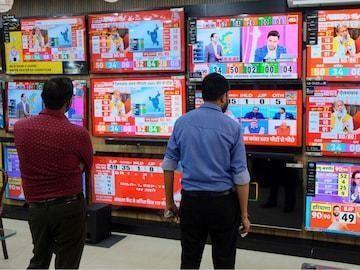
How Accurate Were Delhi Exit Poll Predictions in 2015 & 2020?
Exit polls have become an integral part of election coverage in India, providing a snapshot of the voting trends and predicting the outcome of the elections. However, the accuracy of these predictions is often subject to scrutiny and debate. In this blog post, we will analyze the accuracy of Delhi exit polls predictions in 2015 and 2020 and examine how closely they matched the actual election results.
2015 Delhi Assembly Elections
In the 2015 Delhi Assembly elections, exit polls estimated that the Aam Aadmi Party (AAP) would secure 45 seats, the Bharatiya Janata Party (BJP) 24, and the Congress party one. However, the actual results saw AAP winning a whopping 67 seats, leaving BJP with a paltry three and Congress with zero.
The exit polls conducted by various news organizations and agencies had predicted a close contest between AAP and BJP, with both parties expected to win around 40 seats each. However, the actual results showed a landslide victory for AAP, which won 67 out of the 70 seats in the Delhi Assembly.
There were several factors that contributed to the inaccuracy of the exit polls. One of the main reasons was the lack of a clear frontrunner in the elections. AAP, which was the incumbent government, was facing a strong challenge from BJP, which had won the 2014 Lok Sabha elections in Delhi. The Congress party, which had traditionally been a strong force in Delhi politics, was struggling to regain its footing.
Another factor that contributed to the inaccuracy of the exit polls was the sampling methodology. Many exit polls relied on samples of around 2,000-3,000 voters, which is a relatively small sample size. This can lead to inaccuracies and incorrect predictions, especially in a city like Delhi, where the voter demographics are diverse and complex.
2020 Delhi Assembly Elections
Fast forward to the 2020 Delhi Assembly elections, and the exit polls predictions were even more inaccurate. According to exit polls, AAP was expected to win 54 seats, while BJP was predicted to win 15. However, the actual results saw AAP winning 62 seats and BJP winning eight.
The exit polls conducted by various news organizations and agencies had predicted a close contest between AAP and BJP, with both parties expected to win around 50 seats each. However, the actual results showed a clear victory for AAP, which won 62 out of the 70 seats in the Delhi Assembly.
There were several factors that contributed to the inaccuracy of the exit polls. One of the main reasons was the changing voter dynamics in Delhi. In the 2015 elections, AAP had won a landslide victory by promising freebies and populist policies. However, in the 2020 elections, the voter dynamics had shifted, and AAP’s popularity had decreased. Many voters were dissatisfied with AAP’s governance and were looking for a change.
Another factor that contributed to the inaccuracy of the exit polls was the impact of the COVID-19 pandemic. The pandemic had disrupted the election campaign, and many voters were unable to participate in the polls due to lockdown restrictions. This had an impact on the exit polls, which relied on samples of voters who were able to participate in the polls.
Conclusion
In conclusion, the accuracy of Delhi exit polls predictions in 2015 and 2020 was low. The exit polls underestimated AAP’s performance in both elections and overestimated BJP’s performance. There were several factors that contributed to the inaccuracy of the exit polls, including the sampling methodology and the changing voter dynamics in Delhi.
The exit polls conducted by various news organizations and agencies should be taken with a grain of salt, and the actual election results should be the ultimate determinant of the outcome. While exit polls can provide valuable insights into the voting trends, they are not always accurate and should be used with caution.
News Source:




